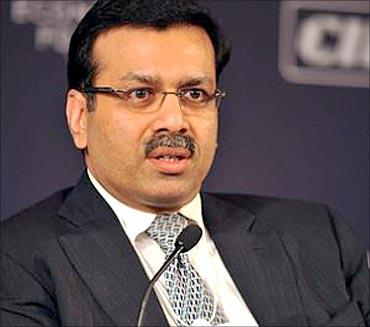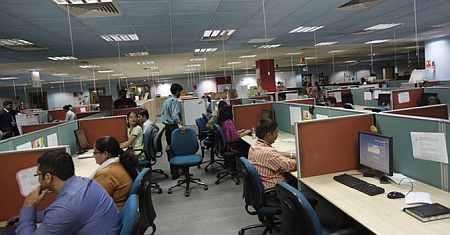 | « Back to article | Print this article |
Why Sanjeev Goenka is foraying into IT biz
Limited opportunities in his 100-year power business might have prompted Sanjiv Goenka to enter a new business area, but there could be other growth plans up his sleeve.
After concluding the Firstsource deal, Goenka speaks to Business Standard about the reasons behind the deal and the way forward.
Edited excerpts:
What is the rationale behind entering the IT space?
Quite honestly, we have been looking at entering a different segment of business and had appointed McKinsey to help us strategise and decide.
Given that growth opportunities in the power sector are getting limited and they are taking very long to materialise due to the environmental and land issues, they recommended the BPO sector.
This came as a good opportunity. We met with the management and were very impressed.
We got McKinsey to do a diligence on the customers, Deloitte to do financial diligence and Khaitans to do legal diligence.
The diligence findings just reaffirmed what we believed and we came to an agreement.
Click NEXT to read further. . .
Why Sanjeev Goenka is foraying into IT biz
Isn't it a low margin business?
Frankly, you invest Rs 700 crore (Rs 7 billion) in the equity of a power company and you get a maximum profit of Rs 140 crore (Rs 1.4 billion) and after a lot of hassles.
Here, you invest Rs 650 crore (Rs 6.5 billion) and get a company where you will have a profit after tax of Rs 150 crore (Rs 1.5 billion).
Any board level changes in the offing?
Once shareholding transfers are effective, we will have proportionate representation on the board.
Click NEXT to read further. . .
Why Sanjeev Goenka is foraying into IT biz
What is the strength of the board and how many board members will you have?
We have not really looked at that. This just provided us a very good opportunity in a high growth sector.
It is in the right segments, which is healthcare, telecom, media and financial sector in the BPO space.
They have very good clients and a very good management team.
There were certain issues with FCCBs (foreign currency convertible bonds), but all that will get resolved hopefully by December, and the company can completely focus on growth and its core business.
The image is for representation only.
Click NEXT to read further. . .
Why Sanjeev Goenka is foraying into IT biz
What is the total outstanding FCCBs?
There is a certain amount of cash deposit that the company has and there is an obligation to the FCCB holders.
The net outstanding is $85 million.
We are taking 34.5 per cent directly in the company, roughly $53 million.
So there is a shortfall of around $30 million, which will be met by some loans which has been organised.
What is the price at which you are acquiring the stake?
It is Rs 12.10, according to Sebi formula.
Click NEXT to read further. . .
Why Sanjeev Goenka is foraying into IT biz
What is the deal size?
It is Rs 650 crore (Rs 6.5 billion).
Rupees 278 crore (Rs 2.78 billion) is for 34.5 per cent and then we are buying 5 per cent each from ICICI, Fidelity and Temasek.
That's 49.5 and 26 per cent in public offer. So the total takes me to Rs 650 crore.
Are opportunities in retail limited as well?
Of course not.
It is not that we are not going to grow in power also.
We will grow in power, but it's just that the pace is not what we had anticipated.
Click NEXT to read further. . .
Why Sanjeev Goenka is foraying into IT biz
Spencer's is a subsidiary of CESC and now Firstsource. Why is CESC a vehicle for growth? Will you look at hiving off non-core?
We will consider at the right time.
What are the growth areas that McKinsey has recommended?
There are a lot of recommendations, but can't talk about it now.






